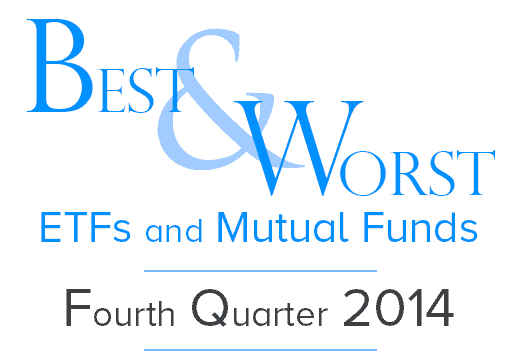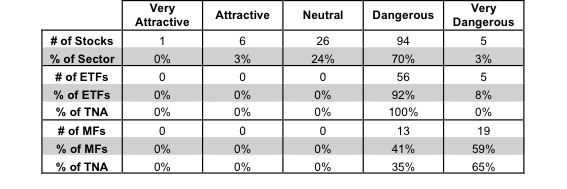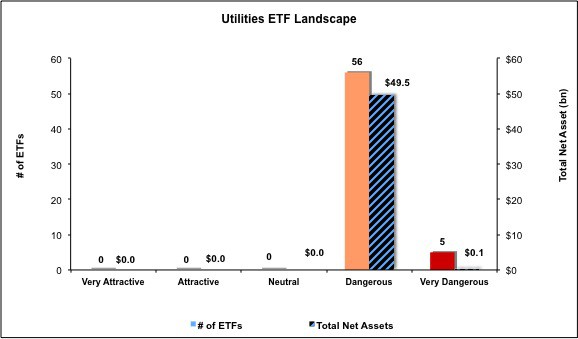The Utilities sector ranks last out of the ten sectors as detailed in my Sector Rankings for ETFs and Mutual Funds report. It gets my Dangerous rating, which is based on aggregation of ratings of 8 ETFs and 32 mutual funds in the Utilities sector as of January 22nd, 2014. Prior reports on the best & worst ETFs and mutual funds in every sector are here.
Figure 1 ranks from best to worst the six Utilities ETFs that meet our liquidity standards and Figure 2 shows the best and worst-rated Utilities mutual funds. Not all Utilities sector ETFs and mutual funds are created the same. The number of holdings varies widely (from 20 to 78), which creates drastically different investment implications and ratings. The best ETFs and mutual funds allocate more value to Attractive-or-better-rated stocks than the worst ETFs and mutual funds, which allocate too much value to Neutral-or-worse-rated stocks.
To identify the best and avoid the worst ETFs and mutual funds within the Utilities sector, investors need a predictive rating based on (1) stocks ratings of the holdings and (2) the all-in expenses of each ETF and mutual fund. Investors need not rely on backward-looking ratings. My fund rating methodology is detailed here.
Investors should not buy any Utilities ETFs or mutual funds because none get an Attractive-or-better rating. If you must have exposure to this sector, you should buy a basket of Attractive-or-better rated stocks and avoid paying undeserved fund fees. Active management has a long history of not paying off.
Get my ratings on all ETFs and mutual funds in this sector on my free mutual fund and ETF screener.
Figure 1: ETFs with the Best & Worst Ratings

Sources: New Constructs, LLC and company filings
Guggenheim S&P Equal Weight Utilities ETF (RYU) and PowerShares Dynamic Utilities (PUI) are excluded from Figure 1 because their total net assets (TNA) are below $100 million and do not meet our liquidity standards.
Figure 2: Mutual Funds with the Best & Worst Ratings – Top 5
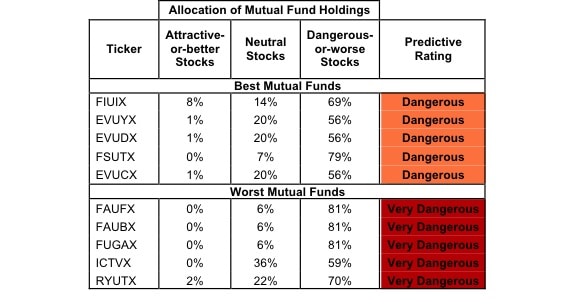
Sources: New Constructs, LLC and company filings
Meeder Funds: Meeder Utilities & Infrastructure Fund (FLRUX) is excluded from Figure 2 because its total net assets (TNA) are below $100 million and do not meet our liquidity standards.
State Street SPDR Utilities Select Sector SPDR (XLU) is my top-rated Utilities ETF and Fidelity Devonshire Trust: Fidelity Telecom & Utilities Fund (FIUIX) is my top-rated Utilities mutual fund. Both earn my Dangerous rating.
PowerShares S&P SmallCap Utilities Portfolio (PSCU) is my worst-rated Utilities ETF and Rydex Series Funds: Utilities Fund (RYUTX) is my worst-rated Utilities mutual fund. PSCU earns my Dangerous rating and RYUTX earns my Very Dangerous rating.
Figure 3 shows that 7 out of the 132 stocks (over 3% of the market value) in Utilities ETFs and mutual funds get an Attractive-or-better rating. However, only no Utilities ETFs or mutual funds get an Attractive-or-better rating.
The takeaways are: mutual fund managers allocate too much capital to low-quality stocks and Utilities ETFs hold poor quality stocks.
Figure 3: Utilities Sector Landscape For ETFs, Mutual Funds & Stocks
As detailed in “Cheap Funds Dupe Investors”, the fund industry offers many cheap funds but very few funds with high-quality stocks, or with what I call good portfolio management.
Investors need to tread carefully when considering Utilities ETFs and mutual funds, as no ETFs or mutual funds in the Utilities sector allocate enough value to Attractive-or-better-rated stocks to earn an Attractive rating. Investors would be better off by focusing on individual stocks instead.
Consolidated Edison, Inc. (ED) is one of my favorite stocks held by Utilities ETFs and mutual funds and is the only Utilities-classified stock that earns my Attractive rating. Consolidated Edison has grown after-tax profit (NOPAT) by 15% compounded annually over the last four years. ED’s 5% return on invested capital (ROIC) ranks second out of 22 companies in its industry group. ED is also undervalued. At its current valuation of ~$54/share, ED has a price-to-economic book value (PEBV) ratio of 0.9. This valuation implies that the market expects ED’s NOPAT to permanently decline by 10%. Given its track record of profitability, these expectations appear to be overly pessimistic and make ED a good value for investors.
NRG Energy, Inc. (NRG) is one of my least favorite stocks held by Utilities ETFs and mutual funds and earns my Very Dangerous rating. NRG Energy’s after-tax profits (NOPAT) have declined by 22% compounded annually over the last four years, and the company earns a bottom-quintile return on invested capital (ROIC) of 2%. Furthermore, NRG Energy has only generated positive economic earnings in three of the last nine years. Worse yet, dangerously high expectations are embedded in the stock price. To justify its current valuation of ~$28/share, NRG must grow NOPAT by 21% compounded annually over the next 10 years. Those expectations are very optimistic for a utility company. These high expectations coupled with poor historical profit growth make NRG a dangerous pick for investors.
82 stocks of the 3000+ I cover are classified as Utilities stocks, but due to style drift, Utilities ETFs and mutual funds hold 132 stocks.
Figures 4 and 5 show the rating landscape of all Utilities ETFs and mutual funds.
My Sector Rankings for ETFs and Mutual Funds report ranks all sectors and highlights those that offer the best investments.
Figure 4: Separating the Best ETFs From the Worst ETFs
Figure 5: Separating the Best Mutual Funds From the Worst Mutual Funds
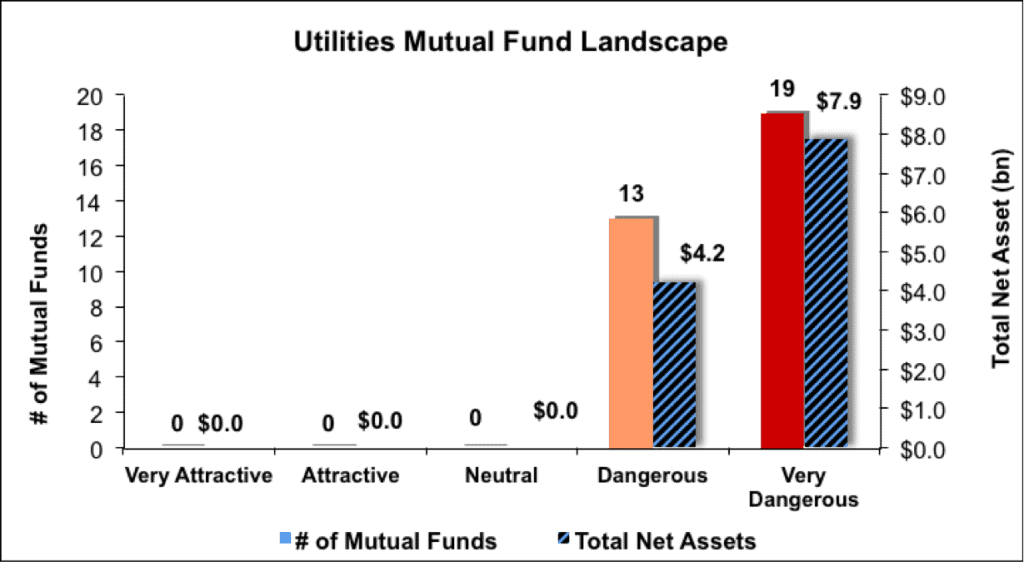
Review my full list of ratings and rankings along with reports on all 8 ETFs and 32 mutual funds in the Utilities sector.
Jared Melnyk contributed to this report.
Disclosure: David Trainer and Jared Melnyk receive no compensation to write about any specific stock, sector or theme.
